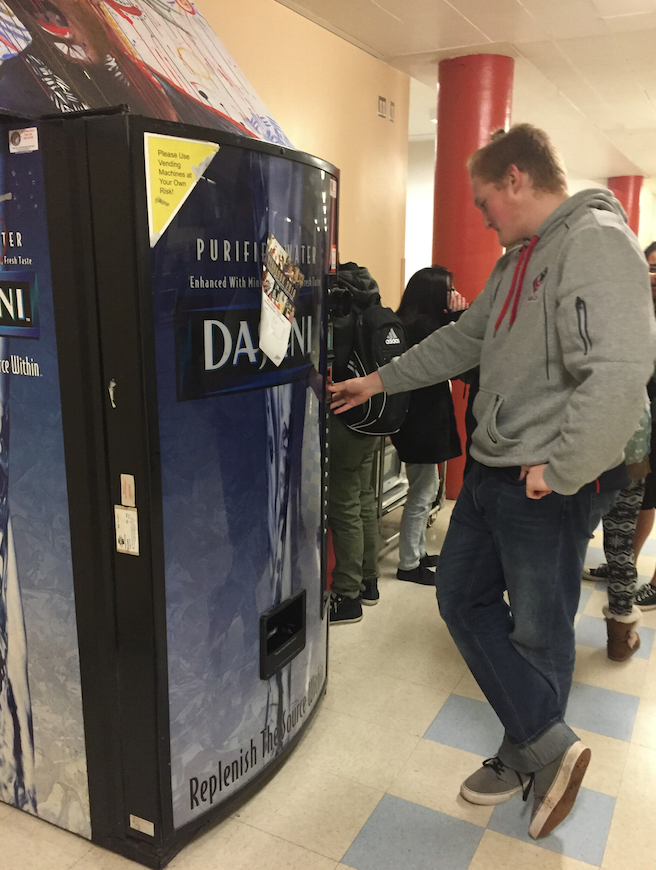Vending machines gone for good
It’s passing time at Lincoln High and in the cafeteria, students stream in and out of their classes.
The constant flow makes it hard to focus on anything beside running into people. If a student is hungry, the fastest solution in the cafeteria’s lone vending machine. Trouble is, it now only offers water, juice and low-calorie sports drinks.
Upperclassmen remember three years ago when vending machines in the building contained snacks such as candy, chips and many other “junk” foods. These machines provided a snack during the school day.
“I loved the vending machines,” says junior Will Leach. “I noticed they were gone immediately.”
Unhealthy snacks are why Lincoln only has one vending machine. The U.S. Department of Agriculture set strict “Smart Snack” guidelines for schools across the country that Portland Public Schools follows. These guidelines, introduced in 2011 to combat childhood obesity, are designed to reduce empty calories in snacks available to the students.
According to Dr. Gitta Grether-Sweeney, director of Nutrition Services for PPS, when the new standards were released, the district had a choice: keep vending machines in the school with healthier snacks, or take them out altogether. Aside from the drink machine, the vending machines lost. So did students in need of a quick bite.
“We don’t want students making meals out of snacks,” says Grether-Sweeney.
For many high school students, snacking is a part of everyday life. What many don’t realize is that it impacts a student’s school day. Research shows that three hours after your last meal, blood sugar levels begin to drop, resulting in dropping energy and increased sluggishness. A quick and easy solution is a snack.
Even though most snacks boost energy and mental productivity, the type of snack can determine how much attention will improve in the classroom.
Snacks low in nutrition often contain sugary carbohydrates, and will give you a short-term solution. However, according to the USDA, a snack filled with important nutrients improves mental focus as well as physical energy.
The only trouble is, the most popular place to get snacks at Lincoln is an off-campus convenience store, which offers few healthy options for students in need of an energy boost.
Vending machines stocked with food might not be out of the picture forever at Lincoln.
“I have considered putting complete, wholesome meals in vending machines,” says Grether-Sweeney. The USDA says a wholesome meal includes dairy, whole wheat, fruit or vegetables and protein.
But machines with full meals inside are not coming anytime soon. The concept is still in the brainstorm stage, she says.
There is no perfect solution to the healthy snacking predicament. Lincoln is an urban location, and unhealthy food will always be near campus. But a close, quick healthy option – a vending machine stocked with nutritious treats in the LHS cafeteria – would be a tempting, smart alternative.
“It would be nice to have a way to get a snack at school,” says freshman Daniel Lewinsohn. “I never have the time to get anything to eat before soccer practice.”


Annie Estep • Dec 28, 2016 at 10:32 pm
Hey really nice article very informational.